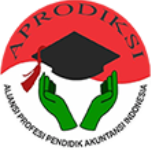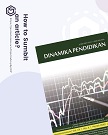Think Pair Share (TPS) as Method to Improve Student’s Learning Motivation and Learning Achievement
(1) Program Studi Akuntansi, Politeknik Harapan Bersama, Indonesia
(2) Program Studi Akuntansi, Politeknik Harapan Bersama, Indonesia
(3) Program Studi Akuntansi, Politeknik Harapan Bersama, Indonesia
Abstract
This research aims to find out the application of Think Pair Share (TPS) learning method in improving learning motivation and learning achievement in the subject of Introduction to Accounting I of the Accounting Study Program students of Politeknik Harapan Bersama. The Method of data collection in this study used observation method, test method, and documentation method. The research instruments used observation sheet, questionnaire and test question. This research used Class Action Research Design which is an action implementation oriented research, with the aim of improving quality or problem solving in a group by carefully and observing the success rate due to the action. The method of analysis used descriptive qualitative and quantitative analysis method. The results showed that the application of Think Pair Share Learning (TPS) Method can improve the Learning Motivation and Achievement. Before the implementation of the action, the obtained score is 67% then in the first cycle increases to 72%, and in the second cycle increasws to 80%. In addition, based on questionnaires distributed to students, it also increases the score of Accounting Learning Motivation where the score in the first cycle of 76% increases to 79%. In addition, in the first cycle, the score of pre test and post test of the students has increased from 68.86 to 76.71 while in the second cycle the score of pre test and post test of students has increased from 79.86 to 84.86.
Keywords
Full Text:
PDFReferences
Arjanggi, R., & Suprihatin, T. (2011). Metode pembelajaran tutor teman sebaya meningkatkan hasil belajar berdasar regulasi-diri. Makara Hubs-Asia, 8(3).
Anni, Catharina Tri. (2009). Achmad Rifa’i RC. Eddy Purwanto dan Daniel Purnomo. 2006. Psikologi Belajar. Semarang : UPT UNNES Press.
Carss, W. D. (2007). The effects of using think-pair-share during guided reading lessons (Doctoral dissertation, The University of Waikato).
Hamdu, G., & Agustina, L. (2011). Pengaruh motivasi belajar siswa terhadap prestasi belajar IPA di sekolah dasar. Jurnal penelitian pendidikan, 12(1), 90-96.
Hakim, L. (2009). Perencanaan Pembelajaran. Bandung: Wacana Prima.
Hasan, S. H. (2012). Pendidikan Sejarah untuk Memperkuat Pendidikan Karakter. Paramita: Historical Studies Journal, 22(1).
Ikhtiarfan, Yanza. (2016). Penerapan Model Pembelajaran Kooperatif Teknik Think Pair Share (TPS) untuk Meningkatkan Motivasi Belajar Akuntansi pada Mata Pelajaran Dasar-Dasar Perbankan Siswa Kelas X AK 4 TA 2015/2016. Skripsi. FE UNY
Kothiyal, A., Majumdar, R., Murthy, S., & Iyer, S. (2013, August). Effect of think-pair-share in a large CS1 class: 83% sustained engagement. In Proceedings of the ninth annual international ACM conference on International computing education research (pp. 137-144). ACM.
Kusuma, F. W., & Aisyah, M. N. (2012). Implementasi Model Pembelajaran Kooperatif Tipe think pair share untuk meningkatkan aktivitas belajar akuntansi siswa kelas XI IPS 1 SMA Negeri 2 Wonosari tahun ajaran 2011/2012. Jurnal Pendidikan Akuntansi Indonesia, 10(2).
Mawarsih, S. E., & Hamidi, N. (2013). Pengaruh Perhatian Orang Tua dan Motivasi Belajar terhadap Prestasi Belajar Siswa SMA Negeri Jumapolo. Jupe-Jurnal Pendidikan Ekonomi, 1(3).
Mulyani, S., & Sofiani, A. (2016). Improving the Skills of Demand Function Counting and Demand Curve Drawing Using Drill Method and Think Pair Share (TPS). Dinamika Pendidikan, 11(2), 108-116.
Ni'mah, A., & Dwijananti, P. (2014). Penerapan Model Pembelajaran Think Pair Share (TPS) dengan Metode Eksperimen untuk Meningkatkan Hasil Belajar dan Aktivitas Belajar Siswa Kelas VIII MTs. Nahdlatul Muslimin Kudus. Unnes Physics Education Journal, 3(2).
Sani, R. A. (2013). Inovasi pembelajaran. Jakarta: Bumi Aksara.
Silberman, Mel. (2009). Active Learning. Yogyakarta: Pustaka Iman Madani
Sugiarto, D., & Sumarsono, P. (2014). The Implementation of Think-Pair-Share Model to Improve Students’ Ability in Reading Narrative Texts. International Journal of English and Education, 3(3), 206-215.
Surayya, L., Subagia, I. W., Tika, I. N., & Si, M. (2014). Pengaruh model pembelajaran think pair share terhadap hasil belajar IPA ditinjau dari keterampilan berpikir kritis siswa. Jurnal Pendidikan IPA, 4(1).
Suryadarma, D., & Jones, G. W. (Eds.). (2013). Education in Indonesia. Institute of Southeast Asian Studies.
Syarif, I. (2012). Pengaruh model blended learning terhadap motivasi dan prestasi belajar siswa SMK. Jurnal Pendidikan Vokasi, 2(2).
Trianto. (2007). Model-model Pembelajaran Inovatif Berorientasi Konstruktivistik. Jakarta: Tim Prestasi Pustaka
Warren, Reeve dan Duchac. (2014). Pengantar Akuntansi. Jakarta: Salemba Empat
Widoyoko, E. P. (2009). Evaluasi program pembelajaran.
Refbacks
- There are currently no refbacks.

This work is licensed under a Creative Commons Attribution 4.0 International License.

.png)

.png)





